Welcome to our free classical music site

Do you write about classical music? Are you a blogger? Want to team up with Classical Connect? Send us a message, let's talk!

Do you write about classical music? Are you a blogger? Want to team up with Classical Connect? Send us a message, let's talk!
February 15, 2016. Michael Praetorius. Considering the major role Germany has played in the history of European music from the 18th century to our time, it comes as a surprise that its’ role was not as prominent during the Renaissance. Martin Luther, the great theologian and reformer, composed a number of hymns (he also said that “Next to the Word of God, the noble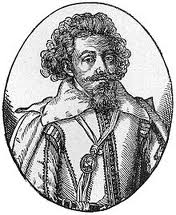 art of music is the greatest treasure in the world”), and there were many musicians working at the courts of German princes and margraves, but none of them were on the same level as the great composers of Flanders or Italy. That is, till Michael Praetorius who was born Michael Schultze (Praetorius is the Latinized version of his family name, which means “judge”) in Creuzburg, on February 15th of 1571. Creuzburg, a small town in Thuringia, lies less than six miles away from Eisenach, where Luther translated the Bible into German and where Bach was born in 1675. In 1573 the family moved to Torgau, Saxony, where Michael took musical classes from a local cantor. He went to the University of Frankfurt an der Oder and later attended a Latin School in Zerbst. Even though we know nothing about his musical education, clearly he was studying music, as sometime around 1587, when Praetorius was 16, he was appointed organist at Marienkirche, the oldest in Frankfurt. An interesting story is related to the church: it had famous gothic stained glass windows with 117 different images, created around 1360. In the middle of WWII the windows were removed and stored for protection in the Sanssouci palace in Potsdam. After the war, together with so much other loot, the windows were sent to Russia and disappeared there without a trace. They resurfaced 1997 in the storage of the Hermitage. Surprisingly, the Russian government agreed to return them to Germany, one of the very few pieces of art that ever were.
art of music is the greatest treasure in the world”), and there were many musicians working at the courts of German princes and margraves, but none of them were on the same level as the great composers of Flanders or Italy. That is, till Michael Praetorius who was born Michael Schultze (Praetorius is the Latinized version of his family name, which means “judge”) in Creuzburg, on February 15th of 1571. Creuzburg, a small town in Thuringia, lies less than six miles away from Eisenach, where Luther translated the Bible into German and where Bach was born in 1675. In 1573 the family moved to Torgau, Saxony, where Michael took musical classes from a local cantor. He went to the University of Frankfurt an der Oder and later attended a Latin School in Zerbst. Even though we know nothing about his musical education, clearly he was studying music, as sometime around 1587, when Praetorius was 16, he was appointed organist at Marienkirche, the oldest in Frankfurt. An interesting story is related to the church: it had famous gothic stained glass windows with 117 different images, created around 1360. In the middle of WWII the windows were removed and stored for protection in the Sanssouci palace in Potsdam. After the war, together with so much other loot, the windows were sent to Russia and disappeared there without a trace. They resurfaced 1997 in the storage of the Hermitage. Surprisingly, the Russian government agreed to return them to Germany, one of the very few pieces of art that ever were.
Sometime around 1595 Praetorius entered the service of Duke Heinrich Julius of Brunswick-Wolfenbütte. The Duke was interested in arts (although he also enjoyed persecuting Jews and witches); he even invited John Dowland, the famous English composer, to Wolfenbütte to meet with Praetorius. It seems that the Duke was very fond of Praetorius as he took him along on many of his journeys, to Prague, for example, to the court at Hesse and many other places. These travels helped to spread Praetorius’s fame: in 1613, when the Duke died, Praetorius was immediately invited by the Elector Johann Georg of Saxony to Dresden, to become a deputy to the Kapellmeister. The court of the Elector was one of the finest in all of Germany; there Praetorius met the younger Heinrich Schütz and also many Italian musicians, who strongly affected his musical style. His duties in Dresden were over by 1616, but by then Praetorius was the most famous composer in Germany and was receiving invitations from all over the land\. We know that he worked as the Kapellmeister in Magdeburg, then was invited by the Landgrave Moritz of Hesse, a great lover of music, to Kassel. He also worked in Leipzig, Nuremberg and Bayreuth. The last years of his life he suffered of ill health; Praetorius returned to Wolfenbüttel in 1620 and died there on February 15th of 1621.
Praetorius was phenomenally productive. He compiled twelve hundred chorales into nine volumes he titled Musae Sioniae and more than 300 dances into a collection called Terpsichore. Praetorius, who spoke several languages and was one of the most learned musicians of his generation, also wrote a number of theoretical treaties on music. Here’s one of his earlier hymns, Puer natus in Bethlehem. Huelgas Enselmble is conducted by Paul van Nevel. And here’s an excerpt from one of his last compositions, Wachet auf, ruft uns die Stimme (Awake, calls the voice to us), the first section of his collection Polyhymnia Caduceatrix & Panegyrica. You can clearly hear Italian influences. Musica Fiata and La Capella Ducale are conducted by Robert Wilson.Permalink
February 8, 2016. Mendelssohn. Last week we missed Felix Mendelssohn’s birthday: he was born on February 3rd of 1809. Mendelssohn is of course famous as one of the foremost romantic composers of the 19th century, but he also brought back to life one of greatest masterpieces of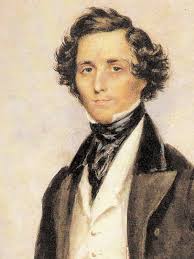 Johann Sebastian Bach, The St. Matthew Passion. This episode is interesting as it also sheds light on the life of the emancipated German Jewry in the early 19th century. The St. Matthew Passion was first performed in April of 1727 in the St. Thomas Church in Leipzig where Bach served as a Kapellmeister. It was then performed there several times during Bach’s life time. After Bach’s death in 1750, the Passion was played occasionally in the Thomaskirche but never outside of Leipzig. Then around 1800 all performances stopped. It doesn’t mean that the work was completely forgotten: the scores of the Passion were in circulation and musicians could study them. One of such enthusiasts was the composer Carl Friedrich Zelter, Felix’s music teacher. Zelter was the head of Sing-Akademie, Berlin’s choral society; he was very fond of Bach but thought the Passion to be way too complex (and long) to be performed in public. Nonetheless, parts of the Passion were being rehearsed by members of Sing-Akademie, some of these rehearsals taking place in Zelter’s home; that’s where Felix heard them for the first time. Members of Sing-Akademie came mostly from Berlin’s haut bourgeoisie but prominent Jewish families were also part of it almost from the beginning. Several members of the Mendelssohn family belonged to Sing-Akademie and so did the Itzigs, descendants of Daniel Itzig, the banker to Frederick the Great of Prussia. Bella Solomon, Daniel Itzig’s daughter, and Felix’s grandmother, sung in the Akademie. When Felix was 14, Bella Solomon presented him with a copy of the Passion’s score. It’s interesting to note that Bella, who sung all those Lutheran hymns at the Sing-Akademie, was herself a religious Jew. The young Felix was not: his father renounced the religion and Felix and his siblings didn’t have a religious education. At the age of seven he was baptized. Bella didn’t know about it till much later and clearly not when she presented Felix with Bach’s score.
Johann Sebastian Bach, The St. Matthew Passion. This episode is interesting as it also sheds light on the life of the emancipated German Jewry in the early 19th century. The St. Matthew Passion was first performed in April of 1727 in the St. Thomas Church in Leipzig where Bach served as a Kapellmeister. It was then performed there several times during Bach’s life time. After Bach’s death in 1750, the Passion was played occasionally in the Thomaskirche but never outside of Leipzig. Then around 1800 all performances stopped. It doesn’t mean that the work was completely forgotten: the scores of the Passion were in circulation and musicians could study them. One of such enthusiasts was the composer Carl Friedrich Zelter, Felix’s music teacher. Zelter was the head of Sing-Akademie, Berlin’s choral society; he was very fond of Bach but thought the Passion to be way too complex (and long) to be performed in public. Nonetheless, parts of the Passion were being rehearsed by members of Sing-Akademie, some of these rehearsals taking place in Zelter’s home; that’s where Felix heard them for the first time. Members of Sing-Akademie came mostly from Berlin’s haut bourgeoisie but prominent Jewish families were also part of it almost from the beginning. Several members of the Mendelssohn family belonged to Sing-Akademie and so did the Itzigs, descendants of Daniel Itzig, the banker to Frederick the Great of Prussia. Bella Solomon, Daniel Itzig’s daughter, and Felix’s grandmother, sung in the Akademie. When Felix was 14, Bella Solomon presented him with a copy of the Passion’s score. It’s interesting to note that Bella, who sung all those Lutheran hymns at the Sing-Akademie, was herself a religious Jew. The young Felix was not: his father renounced the religion and Felix and his siblings didn’t have a religious education. At the age of seven he was baptized. Bella didn’t know about it till much later and clearly not when she presented Felix with Bach’s score.
By 1829, the 20 year-old Felix was already an established composer. He had already written his first symphony, a highly successful Midsummer Night's Dream Overture Op.21, which was completed when Felix was 17 and a half years old; several piano and string quartets, a violin sonata and a large number of songs. He was also preoccupied with the idea of performing The St. Matthew Passion. He had started private rehearsals of the Passion sometime earlier, enlisting a small group of singers whom he accompanied on the piano. The difficulty of the piece seemed insurmountable but Eduard Devrient, his good friend, a singer and theater director, was enthusiastic and very encouraging. It was Devrient who suggested that they perform the Passion at the Sing-Akademie with Mendelssohn himself conducting (Mendelssohn had never before conducted anything even close to the complexity of Bach’s work). The performance took place in March of 1829 and was a tremendous success. The second performance was scheduled right away, to take place on March 21st, Bach’s birthday. Even that was not enough, the public was craving more and a follow-up performance was set for the Good Friday which fell on April 17th of that year. As but that time Mendelssohn was on his way to London for a series of concerts, Zelter took over the conducting. These performances established the Passion as central to all European classical music repertoire, a position occupied by this masterpiece to this day. Later in his life Mendelssohn started composing an oratorio Christus, clearly influenced by Bach. He never finished it having died at the age of 38 after suffering several strokes. Here’s the first part of Christus; Anne Ackley is the soprano, with the Westminster Choir (Rider University) and New Jersey Symphony conducted by Joseph Flummerfelt. Permalink
February 1, 2015. Missed birthdays. Last week we celebrated Mozart’s 260th birthday and missed several important dates. Franz Schubert was born on January 31st of 1797. Composer of immense talent and a tragically short life, he left an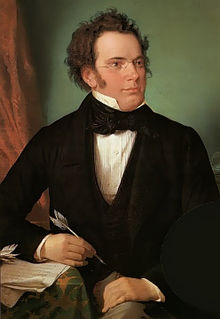 extraordinarily rich body of work: piano sonatas, last three of which have very few peers in all of the piano repertoire; nine symphonies; wonderful chamber music (one has to mention his “Death and the Maiden” quartet (no. 14), his “Trout” Quintet or the great String Quintet in C Major), sacred works, stage work (“Rosamunde,” for example) and much more. But one area where his genius shone the brightest was the Lied. Schubert’s songs pack a great amount of musical material and the broadest range of emotions into little gems that sometimes last less than two minutes. His song cycles Die schöne Müllerin, Winterreise, and Schwanengesang are, of course, incomparable, and so are some individual songs. Here are two, An Die Musik, D. 547, sung by the soprano Elisabeth Schwarzkopf with the great, but in this recording technically imprecise Swiss pianist Edwin Fischer (here), and Gretchen Am Spinnrade, with the flawless Kiri Te Kanawa and Richard Amner (here). Schubert was 17 when he composed Gretchen Am Spinnrade.
extraordinarily rich body of work: piano sonatas, last three of which have very few peers in all of the piano repertoire; nine symphonies; wonderful chamber music (one has to mention his “Death and the Maiden” quartet (no. 14), his “Trout” Quintet or the great String Quintet in C Major), sacred works, stage work (“Rosamunde,” for example) and much more. But one area where his genius shone the brightest was the Lied. Schubert’s songs pack a great amount of musical material and the broadest range of emotions into little gems that sometimes last less than two minutes. His song cycles Die schöne Müllerin, Winterreise, and Schwanengesang are, of course, incomparable, and so are some individual songs. Here are two, An Die Musik, D. 547, sung by the soprano Elisabeth Schwarzkopf with the great, but in this recording technically imprecise Swiss pianist Edwin Fischer (here), and Gretchen Am Spinnrade, with the flawless Kiri Te Kanawa and Richard Amner (here). Schubert was 17 when he composed Gretchen Am Spinnrade.
The Italian composer Luigi Nono was born on January 29th of 1924 in Venice. Nono studied at the Liceo Musicale with the noted composer Gian Francesco Malipiero and then with one of the first avant-garde Italians, Bruno Maderna. Several early works by Nono were presented in Darmstadt. Soon after he became an active participant and, together with Boulez and Stockhausen, one of the leaders of the movement. In 1955 he married Nuria Schoenberg, daughter of Arnold Schoenberg. Nono was a leftist, as were many of his fellow composers. A principled anti-fascist, he went much further left than that. For example, his opera Al gran sole carico d'amore, (the libretto for which he co-wrote with Yuri Lyubimov, the director of the original production and also the director of the famous Moscow Taganka theater), while based on the plays by Bertolt Brecht, also contained excerpts of speeches by Fidel Castro, Che Guevara, Karl Marx and Lenin. Some of the music composed during the 60s was extremely political and dogmatic. For example, his Non Consumiamo Marx consists of sounds recorded during the 1968 student uprising in Paris and a voice reading the messages left on the walls during that period. A much more interesting piece is his Prometeo, composed during several years in the early 1980s. It’s called “opera,” although the word should be taken in its original Italians sense, “work” – Prometeo is a composition for five singers, two speakers, a chorus and small orchestra. The sounds are supposed to be electronically manipulated. Here’s a suite from Prometeo, performed live in Lucerne on August 20th of 2005. Claudio Abbado is conducting.
One great composer was born this week: Felix Mendelssohn, on February 3rd of 1809. Even though we’ve written about him many times, we’ll dedicate an entry to him at a later date.Permalink
January 25, 2016. Mozart. January 27th marks the 260th anniversary of birth. Every year we focus on a different episode of Mozart’s life and present compositions from that period. Last year was about his rather unhappy trip to Paris in 1777-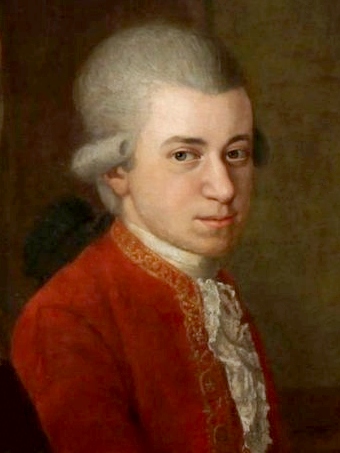 1778. The 22 year-old Mozart had left Paris in September of 1778. He was offered a position in Salzburg at the court of the Prince Archbishop as an organist and concertmaster, and even though it paid three times his previous salary (450 florins instead of 150 – the New York Times has an interesting article on how much that would be in current dollars), Mozart was hesitant: he remembered the stifling atmosphere of Salzburg and was looking for an appointment in other places. He stayed in Mannheim and then in went to Munich but found no offers in either place. To make things worse, his Mannheim lover, the singer Aloysia Weber, seemed to have lost interest in him. (A quick note on these two cities. It was not by chance that Mozart was looking for employment there: Mannheim was famous for its orchestra, considered at that time the best in Germany. Munich had a strong musical connection: in 1778 the Elector Karl Theodor moved his court from Mannheim to Munich, bringing with him 33 musicians who became the core of his court’s orchestra; they also performed in the royal opera.) On January 15th of 1779 Mozart returned to Salzburg. For a while his relationship with Hieronymus Colloredo, the Prince-Archbishop, was quite good, but soon the same tensions that dominated their relationship before the Paris trip, became apparent again. Colloredo wanted Mozart to compose more church music while Mozart was getting more and more interested in opera and other non-liturgical genres. These difficulties were spelled out in a 1782 document appointing Michael Haydn, the younger brother of Franz Joseph Haydn, to the same position as Mozart had previously held: “we accordingly appoint [Michael Haydn] as our court and cathedral organist, in the same fashion as young Mozart was obligated, with the additional stipulation that he show more diligence … and compose more often for our cathedral and chamber music.” What Mozart did compose during that time were three symphonies (a short one, no. 32, no. 33 and no. 34, with a wonderfully energetic Finale, which you can hear in the performance by The Academy of Ancient Music, Christopher Hogwood conducting). Also, a concerto for two pianos, the famous Sinfonia Concertante for Violin and Viola and several other pieces, none of which could’ve been performed either in the Cathedral or at the Court. (Here’s the 1956 recording of the Concertante made by Jascha Heifetz, violin and Willian Primrose, viola)
1778. The 22 year-old Mozart had left Paris in September of 1778. He was offered a position in Salzburg at the court of the Prince Archbishop as an organist and concertmaster, and even though it paid three times his previous salary (450 florins instead of 150 – the New York Times has an interesting article on how much that would be in current dollars), Mozart was hesitant: he remembered the stifling atmosphere of Salzburg and was looking for an appointment in other places. He stayed in Mannheim and then in went to Munich but found no offers in either place. To make things worse, his Mannheim lover, the singer Aloysia Weber, seemed to have lost interest in him. (A quick note on these two cities. It was not by chance that Mozart was looking for employment there: Mannheim was famous for its orchestra, considered at that time the best in Germany. Munich had a strong musical connection: in 1778 the Elector Karl Theodor moved his court from Mannheim to Munich, bringing with him 33 musicians who became the core of his court’s orchestra; they also performed in the royal opera.) On January 15th of 1779 Mozart returned to Salzburg. For a while his relationship with Hieronymus Colloredo, the Prince-Archbishop, was quite good, but soon the same tensions that dominated their relationship before the Paris trip, became apparent again. Colloredo wanted Mozart to compose more church music while Mozart was getting more and more interested in opera and other non-liturgical genres. These difficulties were spelled out in a 1782 document appointing Michael Haydn, the younger brother of Franz Joseph Haydn, to the same position as Mozart had previously held: “we accordingly appoint [Michael Haydn] as our court and cathedral organist, in the same fashion as young Mozart was obligated, with the additional stipulation that he show more diligence … and compose more often for our cathedral and chamber music.” What Mozart did compose during that time were three symphonies (a short one, no. 32, no. 33 and no. 34, with a wonderfully energetic Finale, which you can hear in the performance by The Academy of Ancient Music, Christopher Hogwood conducting). Also, a concerto for two pianos, the famous Sinfonia Concertante for Violin and Viola and several other pieces, none of which could’ve been performed either in the Cathedral or at the Court. (Here’s the 1956 recording of the Concertante made by Jascha Heifetz, violin and Willian Primrose, viola)
In 1780 Mozart received a commission from Munich, from the Elector Karl Theodor himself, to compose a “serious” opera (opera seria). It was to become Mozart’s first mature opera, Idomeneo. (Here’s a Quartet Andrò ramingo e solo from Idomeneo with a great cast: Edita Gruberová and Lucia Popp, sopranos, Baltsa, mezzo-soprano and Luciano Pavarotti, tenor). The premier in Munich in January of 1781, with Mozart conducting, was highly successful. Papa Leopold traveled from Salzburg to attend. The whole family stayed in Munich for another two months. Then came a summons from Vienna where Archbishop Colloredo went to attend the celebrations of the accession of Joseph II as the Holy Roman Emperor. Spoiled by his triumph in Munich, Mozart was especially offended by the Archbishop treating him as a servant. In May of 1781 Mozart asked to be dismissed and a month later he was let go “with a kick on my arse,” as he wrote in a letter. Thus commenced the Viennese period of his life. The portrait of Mozart by Johann della Croce, above, is part of a picture of the family; it was made around the time of the described events, in 1780 or 1781.Permalink
January 18, 2016. William Byrd. With numerous but minor stars who were born this week – two Russians, Cui (b. January 18th of 1835) and Tcherepnin (b. January 20th, 1899), three Frenchmen, Chabrier (1/18/1841, Chausson (1/20/1855) and Dutilleux (1/22/1916), and Muzio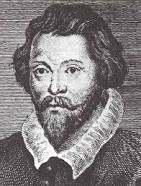 Clementi (b. January 23rd of 1753), an Italian who made his name in England – we’ll turn our attention to one of the greatest English composers of the Renaissance, William Byrd. We’ve mentioned him numerous times but have never written about him in detail. Byrd was born in London, probably in 1542 or 1543. If that’s the case, he would have been about 12 years younger than Orlando di Lasso and five years older than Tomás Luis de Victoria. Very little is known about Byrd’s early years. He was probably a chorister at the Chapel Royal and a pupil of the much older (and famous) Thomas Tallis. Some years later, in 1575, Queen Elisabeth granted Tallis and Byrd a “patent” to print and publish music, and historians surmise that the relationship between the two composers was that of a teacher and pupil. In 1563, Byrd was appointed the organist and master of choristers at the historic Lincoln Cathedral. Composing was one of his main responsibilities, and a number of compositions from that period have survived. Since the reign of Henry VIII, the Church of England had been separated from Rome, but Catholicism was still quite strong and tolerated. Byrd, who was probably raised Protestant, eventually converted to Catholicism, and it’s likely that the years at Lincoln were those of transition. Catholic music of the period was much more complex than the music of the Protestant churches, where a simple melody and clarity of diction were valued more than elaborate polyphony. At some point Byrd was even reprimanded by the Cathedral’s Dean for writing “papist” kind of music. But he also complied with the requirements of the Anglican service, as this wonderful example demonstrates: Magnificat, from his Short Service, is simple and clear (Truro Cathedral Choir is conducted by Andrew Nethsingha). Lincoln was also the place where Byrd composed his first pieces for the virginal (a small harpsichord), thus becoming one of the first composers of what would be known as the English “Virginalist” school (Orlando Gibbons, John Bull and Thomas Morley are among it’s more illustrious representatives).
Clementi (b. January 23rd of 1753), an Italian who made his name in England – we’ll turn our attention to one of the greatest English composers of the Renaissance, William Byrd. We’ve mentioned him numerous times but have never written about him in detail. Byrd was born in London, probably in 1542 or 1543. If that’s the case, he would have been about 12 years younger than Orlando di Lasso and five years older than Tomás Luis de Victoria. Very little is known about Byrd’s early years. He was probably a chorister at the Chapel Royal and a pupil of the much older (and famous) Thomas Tallis. Some years later, in 1575, Queen Elisabeth granted Tallis and Byrd a “patent” to print and publish music, and historians surmise that the relationship between the two composers was that of a teacher and pupil. In 1563, Byrd was appointed the organist and master of choristers at the historic Lincoln Cathedral. Composing was one of his main responsibilities, and a number of compositions from that period have survived. Since the reign of Henry VIII, the Church of England had been separated from Rome, but Catholicism was still quite strong and tolerated. Byrd, who was probably raised Protestant, eventually converted to Catholicism, and it’s likely that the years at Lincoln were those of transition. Catholic music of the period was much more complex than the music of the Protestant churches, where a simple melody and clarity of diction were valued more than elaborate polyphony. At some point Byrd was even reprimanded by the Cathedral’s Dean for writing “papist” kind of music. But he also complied with the requirements of the Anglican service, as this wonderful example demonstrates: Magnificat, from his Short Service, is simple and clear (Truro Cathedral Choir is conducted by Andrew Nethsingha). Lincoln was also the place where Byrd composed his first pieces for the virginal (a small harpsichord), thus becoming one of the first composers of what would be known as the English “Virginalist” school (Orlando Gibbons, John Bull and Thomas Morley are among it’s more illustrious representatives).
In 1572 Byrd was made a Gentleman of the Chapel Royal, a prestigious position through which he gained many powerful patrons among the courtiers of Queen Elisabeth, such as the Earl of Oxford and Lord Paget, the Earl of Worcester. The Queen herself was Byrd’s major benefactor. When she granted Byrd and Tallis a patent to publish music, their first issue, Cantiones, consisting of 34 multi-voice motets, was dedicated to the Queen. Here’s Byrd’s Motet for 6 voices, O lux beata Trinitas. It’s performed by the British Ensemble The Cardinall’s Musick, Andrew Carwood conducting. The years after 1575 were rather difficult for Byrd, as England became much less intolerant toward Catholics. Byrd was never directly prosecuted but at some point was suspended from the Chapel Royal. Byrd could no longer compose openly Catholic music; the most he could allow himself were motets, a form much more accepted in the Catholic service than the Anglican one. Byrd also continued to publish; his partner Tallis died in 1585, leaving Byrd the sole proprietor of the publishing company. Their earlier efforts weren’t commercially successful, but in the 1580s, Byrd, the monopolist, created a flourishing company. He also continued to compose, and here’s a Pavane from that period; Colin Tilney is at the harpsichord.
Byrd was to live another 40 productive years (he died on July 4th of 1623), and we’ll write about them later. Here is a short Agnus Dei from his Mass for Four Voices written in the later period of Byrd’s life. Simon Preston leads the Choir of Christ Church Cathedral, Oxford.Permalink
January 11, 2016. Pierre Boulez. This week we’d like to celebrate the life of Pierre Boulez, composer, conductor, educator, organizer, writer, and an all around remarkable person, who died on January 5th at the age of 90. Boulez was born on March 26th, 1925 in Montbrison, in central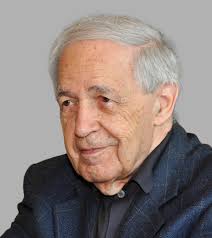 France. In his youth his interests were split between the piano and mathematics. Upon leaving Catholic school in 1941 he spent a year in Lyon studying higher math. In 1942 he moved to Paris. Pierre’s father wanted him to attend the Ecole Polytechnique, but instead he went to theParis Conservatory where he studied harmony with Olivier Messiaen. The Paris Conservatory was a very conservative place in those days. Even Messiaen, himself a modern composer of huge talent, didn’t teach Mahler and Bruckner. Later on, Boulez would mention in an interview that at that time in his mind “there were two twins: Mahler, Bruckner.” In the same interview he said that “German music stopped at Wagner,” so the Second Viennese School wasn’t taught at all. Boulez learned about atonal music from René Leibowitz, a student of Arnold Schoenberg. He had already felt the need to expand his music language and immediately adopted the new techniques. A year later, in 1945, the young Boulez wrote his first atonal piece of music, a set of twelve Notations for piano. He also wrote two piano sonatas, the second one, large in scale, published in 1950. His music was performed by the pianists Yvette Grimaud and Yvonne Loriod (at that time, Messiaen’s wife), but it was the circulation of the scores among musicians that brought Boulez fame among avant-garde musicians. In 1952 Loriod performed the sonata in Darmstadt to great acclaim. Thus started Boulez’s association with a group of tremendously talented and adventuresome composers and theoreticians that became known as the Darmstadt School. Darmstadt Summer Courses for New Music were held from the early 1950s to 1970. Every other year young musicians gathered in the city to present and discuss their music. Formal courses were taught both in composition and interpretation. Even the abridged list of the attendees looks very impressive: in addition to Boulez, there was Bruno Maderna, Karlheinz Stockhausen, Luigi Nono, Luciano Berio, György Ligeti, John Cage – composers who shaped the music of the second half of the 20th century. Philosophers and critics such as Theodor Adorno, presented their ideas. It was around that time that Boulez came up with his famous aphorism: “Any musician who has not felt … the necessity of the dodecaphonic language is OF NO USE.” In 1952 he wrote a seminal piece, “Le Marteau sans maître” (The hammer without a master) for voice and six instruments. Still difficult, even after half a century of music development, it could be heard here. Pierre Boulez conducts a small ensemble consisting of the flute, the guitar and several percussion instruments. Jeanne Deroubaix is the contralto. The period between 1950s and 1970s was the most productive for Boulez as a composer. In the following years he continued to write but dedicated much time to reworking some of the compositions of the earlier period.
France. In his youth his interests were split between the piano and mathematics. Upon leaving Catholic school in 1941 he spent a year in Lyon studying higher math. In 1942 he moved to Paris. Pierre’s father wanted him to attend the Ecole Polytechnique, but instead he went to theParis Conservatory where he studied harmony with Olivier Messiaen. The Paris Conservatory was a very conservative place in those days. Even Messiaen, himself a modern composer of huge talent, didn’t teach Mahler and Bruckner. Later on, Boulez would mention in an interview that at that time in his mind “there were two twins: Mahler, Bruckner.” In the same interview he said that “German music stopped at Wagner,” so the Second Viennese School wasn’t taught at all. Boulez learned about atonal music from René Leibowitz, a student of Arnold Schoenberg. He had already felt the need to expand his music language and immediately adopted the new techniques. A year later, in 1945, the young Boulez wrote his first atonal piece of music, a set of twelve Notations for piano. He also wrote two piano sonatas, the second one, large in scale, published in 1950. His music was performed by the pianists Yvette Grimaud and Yvonne Loriod (at that time, Messiaen’s wife), but it was the circulation of the scores among musicians that brought Boulez fame among avant-garde musicians. In 1952 Loriod performed the sonata in Darmstadt to great acclaim. Thus started Boulez’s association with a group of tremendously talented and adventuresome composers and theoreticians that became known as the Darmstadt School. Darmstadt Summer Courses for New Music were held from the early 1950s to 1970. Every other year young musicians gathered in the city to present and discuss their music. Formal courses were taught both in composition and interpretation. Even the abridged list of the attendees looks very impressive: in addition to Boulez, there was Bruno Maderna, Karlheinz Stockhausen, Luigi Nono, Luciano Berio, György Ligeti, John Cage – composers who shaped the music of the second half of the 20th century. Philosophers and critics such as Theodor Adorno, presented their ideas. It was around that time that Boulez came up with his famous aphorism: “Any musician who has not felt … the necessity of the dodecaphonic language is OF NO USE.” In 1952 he wrote a seminal piece, “Le Marteau sans maître” (The hammer without a master) for voice and six instruments. Still difficult, even after half a century of music development, it could be heard here. Pierre Boulez conducts a small ensemble consisting of the flute, the guitar and several percussion instruments. Jeanne Deroubaix is the contralto. The period between 1950s and 1970s was the most productive for Boulez as a composer. In the following years he continued to write but dedicated much time to reworking some of the compositions of the earlier period.
In 1970 President Georges Pompidou, bound to create a cultural legacy, asked Boulez, who was spending most of his time outside of France, to create an institute dedicated to research in music. The result was the IRCAM (Institut de Recherche et Coordination Acoustique/Musique, or Institute for Research and Coordination Acoustic/Music). It was set in a building next to the Center Pompidou. With the addition two years later of the Ensemble InterContemporain, IRCAM became a major research and performing center for avant-garde music.
Boulez started conducting in 1957. First it was mostly his own music and that of his young colleagues, but eventually he expanded his repertoire to Stravinsky, Debussy, Webern and Messiaen. In the late 50’s he became the guest conductor of the Southwest German Radio Symphony Orchestra and took residence in Baden-Baden, to a large extent in protest to the conservativism of the French musical culture (that was before the IRCAM). A big break came in1971 when he was, rather unexpectedly, hired by the New York Philharmonic. During the following years he conducted every major orchestra, expanding his repertoire to include most of the classics (though he never conducted either Tchaikovsky or Shostakovich). Boulez became one of the greatest interpreters of Mahler. Here’s his tremendous interpretation of the 4th movement (Adagio. Sehr langsam und noch zurückhaltend) of Mahler’s Symphony no. 9 with the Chicago Symphony at its best. Permalink